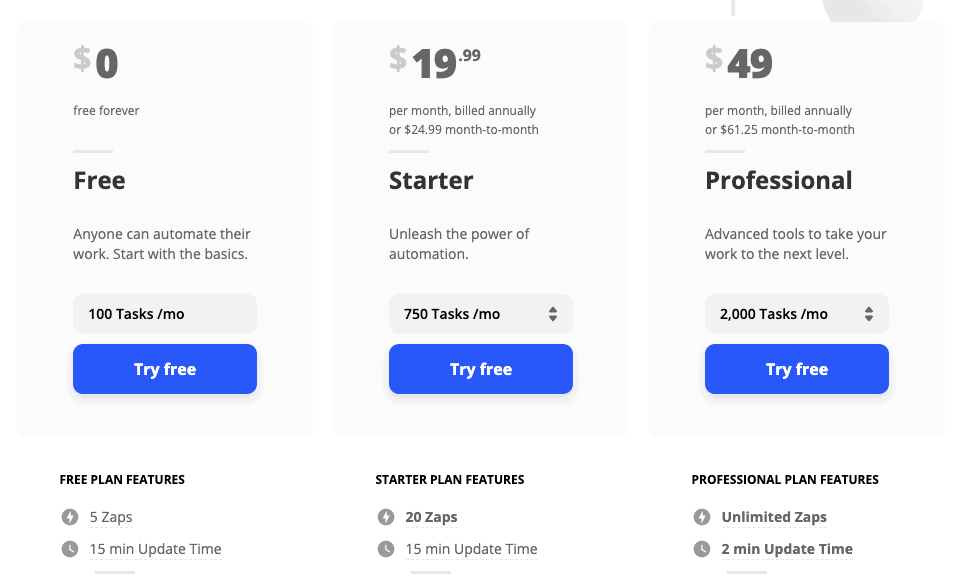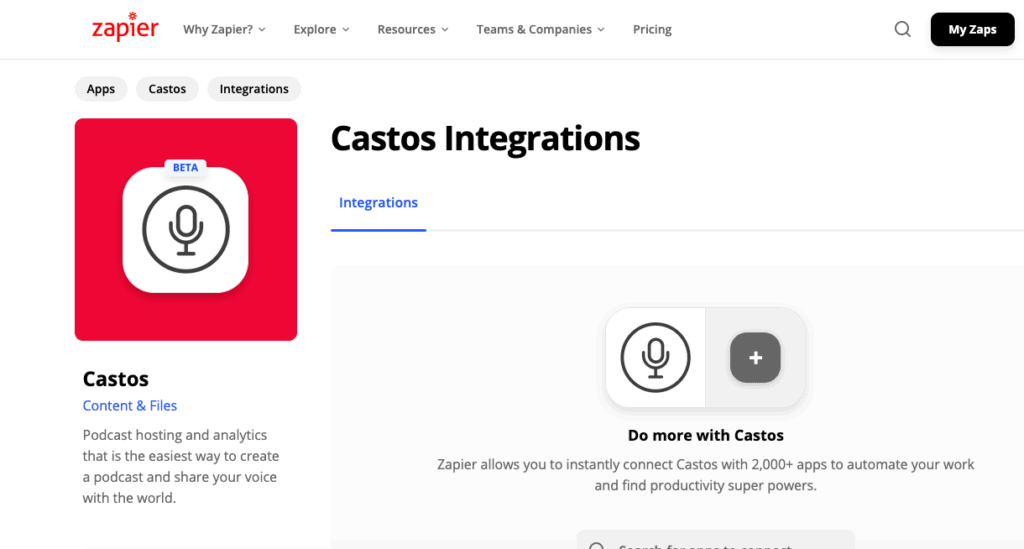Creating a private podcast offers new monetization opportunities for hobbyist and professional podcasters alike. Unlike selling sponsorships or promoting affiliate products, private podcasts generate income by offering listeners new access to you and your ideas.
But private podcasts aren’t run in a vacuum. Instead, the exclusive episodes are integrated with another tool, platform, or service that helps you distribute the content to paying subscribers.
Popular platforms our customers already use that integrate with Zapier include:
- Website building tools like Shopify, WooCommerce, WordPress, and Squarespace
- Email marketing services like Mailchimp, Gmail, ConvertKit, and HubSpot
- Course creation tools like Teachable, Skilljar, TalentLMS, and Thinkific
- Form generators like Gravity Forms, WP Forms, and Typeform
- Payment tools like Square, Stripe, and MemberSpace
At a high-level, a user submits a form or their credit card information that creates a “zap” from Zapier. That zap triggers another event to happen like sending an email to that customer to subscribe them to your private podcast.
Before, that process was completely manual. A listener paid to access your exclusive content, then you manually had to subscribe them to the private feed. But now, the process is entirely automated with over 2,000 popular tools, platforms, and services through Castos’ Zapier integration.
How to Create a Zap With Castos
While the new jargon may sound complicated, there are only 4 simple steps to setting up your first Zapier “zap”. Here’s how to do it from start to finish:
Step 1. Set up a private podcast in Castos
In order to use our new Zapier integration to its fullest, you need to create a private podcast first.
So, log into your Castos Dashboard to set it up. Watch the video below to get started:
Step 2. Create a Zapier account
Zapier has a few plans to choose from depending on your automation needs. The Castos integration is a single-step Zap so the free plan is sufficient if you’re just starting out!

Step 3. Connect Castos and Zapier
Head back to your Castos dashboard to copy the Rest API associated with your account. Hover over your username in the top left corner and click on the “Integrations” option in the dropdown list. Then click the “Rest API” button to find your API key.
Now, back inside Zapier, search for Castos inside the app search bar. Then paste the API key in the pop-up to solidify the connection between our tools.

Step 4. Create a Zap
A “zap” in Zapier is a trigger. It’s based on an action your listener takes that triggers another event to happen. As Zapier phrases it, “When this happens…Do this.”
To create your first one, click on “Make a Zap” inside your Zapier dashboard. Then search for the app you use to subscribe listeners to your private podcast. (Refer to the list above for the most popular apps our customers use.)

You’ll then need to configure the Zapier integration inside whichever app you chose to finalize the Zap. The majority of Zapier’s integrations asks you to copy/paste a Zapier webhook into the settings of the app you’re using to create a connection between the two tools.
Then you need to tell the zap to create a private podcast subscriber inside Castos.

In our video tutorial, we used Gravity Forms to illustrate our first zap. In this example, our listeners submit the Gravity Form to subscribe to our private podcast. After adding a webhook to our Gravity Form, the zap then tells Castos to create a new private podcast subscriber.
The user then receives an email triggered by Castos with instructions on how to play the exclusive episodes in their favorite podcast player.
Why Castos’ Zapier Integration is Game Changing
The beauty of using a tool like Zapier is the flexibility that it provides. With over 2,000 integrations with both popular and lesser-known apps, the tool you’re already using (or want to use) is likely supported by Zapier.
That means you don’t have to use tools you don’t want to use, or change how you currently give listeners access to your private content.
Rather, private podcasting with Castos is an automated process. Saving you time managing private subscribers means more time creating your exclusive content. It also means your users can seamlessly subscribe and start listening within minutes.
Using Zapier and Castos together to grow a private podcast audience is the wave of the future for a lot of hosts. For hobbyists looking to create deeper connections with their super fans, for businesses creating internal podcasts for important company messages, or for course creators whose offer exclusive audio lessons.
Discover new monetization opportunities and forge personal relationships with your listeners with a private podcast today. Then never worry about how to manage each new subscriber by setting up your first zap with Zapier.




